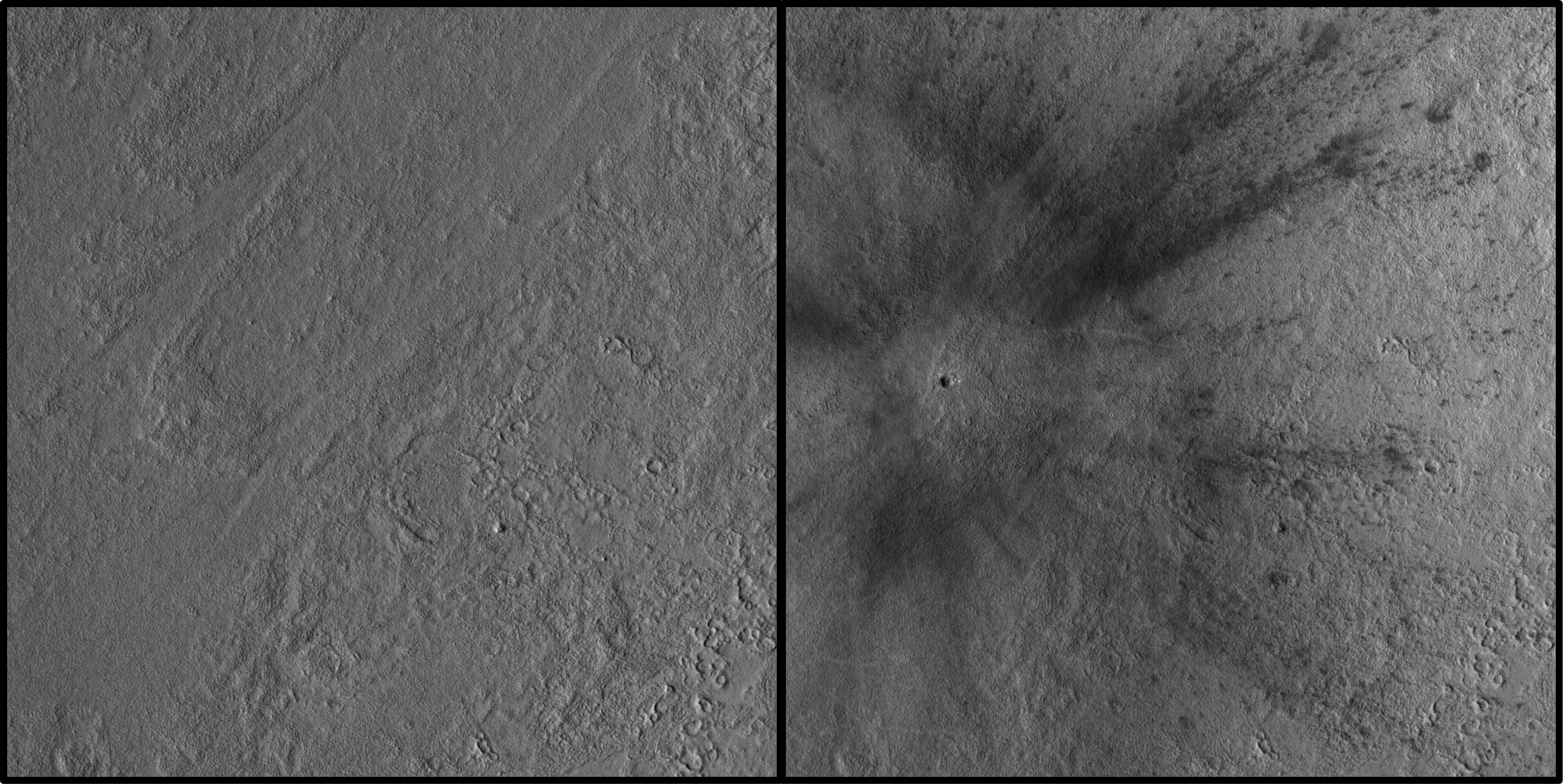Context Camera Views an Impact Crater in Amazonis Planitia
| Credit | NASA/JPL-Caltech/MSSS |
|---|---|
| Language |
|
This meteoroid impact crater on Mars was discovered using the black-and-white Context Camera aboard NASA’s Mars Reconnaissance Orbiter (MRO). The Context Camera took this image showing the impact, which occurred Dec. 24, 2021, in a region called Amazonis Planitia.
Relying on data from the Mars Color Imager camera, also aboard MRO, along with seismic data from NASA’s InSight lander, scientists were able to determine when this particular crater formed.
Looking closely at the crater’s rim, white specks could be detected that suggested the presence of water ice (which was later confirmed by MRO’s High-Resolution Imaging Science Experiment, or HiRISE, camera). Debris thrown during the impact can be seen reaching as far as 23 miles (37 kilometers) away. The disturbance seen in the surface suggests the meteoroid was traveling towards the northeast when it hit the ground, throwing the longest streaks of debris in that direction.
Figure A shows an annotated version of the image.
Figure B shows a before-and-after comparison of this location on Mars.
NASA’s Jet Propulsion Laboratory, a division of Caltech in Pasadena, California, manages the Mars Reconnaissance Orbiter Project for NASA’s Science Mission Directorate in Washington. Malin Space Science Systems in San Diego built and operates the Context Camera. Lockheed Martin Space Systems in Denver built the spacecraft.





























